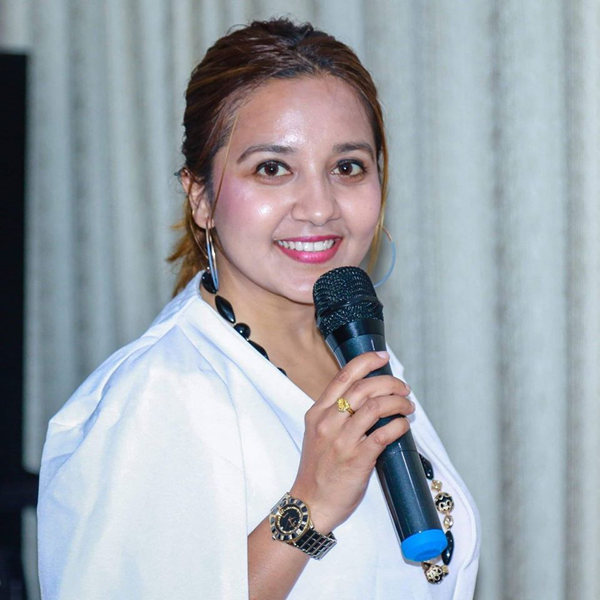Lumbini Province
How a family with four visually-impaired members scrapes by
Gopi Baniya has been sustaining his family by trading crops. But as he grapples with old age, the family stares at an uncertain future.
Sanju Paudel
Even at 72 years of age, Gopi Baniya has to work from dawn to dusk for the livelihood of his family. Baniya, a resident of Ramawapur in ward 54 of Mayadevi Rural Municipality, has a wife, three daughters and a son. Only Gopi and his eldest daughter Sunita, who is married and now lives with her in-laws, can see.
“There is no one other than me in my family who can work and manage my family's livelihood,” Gopi said with a sigh. “I am an unfortunate man. But I will work until my body allows me to support my wife and children.”
Gopi’s wife, Malati, 70, is completely blind and often falls ill. Gopi has to work hard to afford her treatment and manage livelihood.
Gopi is a small trader. He visits local farmers’ homes and purchases paddy, wheat and legumes, among other cash crops. He takes the grains to the markets and sells them, making nominal profits. “I go from village to village to collect grains,” Gopi said. “I can earn a small amount of money by selling them in the market—too meagre for the livelihood of my family.”
Gopi’s life did not move in a straight line since his childhood. He had married at an early age but it ended in just two years. He went to India for work. At home, his relatives made arrangements for his second marriage when he was still in India.
“We tied our nuptial knot without meeting each other,” Gopi recalled. “I knew that Malati was blind when I brought her home after the wedding. I truly felt embarrassed at first. But I could not leave her or misbehave her. Life is going good despite hardships.”
The Baniya couple were extremely happy when their first child was born without any physical disability. “We raised our eldest daughter with the help of our mother-in-law,” Malati said. “But as three other children were born blind, we struggled really hard to raise them.” Malati added that she could see partially in her early childhood but lost eyesight later. After marriage, Gopi took her to hospital for treatment. “But the doctors said treatment was not possible,” she added.
The Baniyas’ second daughter, Anita, did not attend school until she was 10. A neighbour working in the Red Cross Society had suggested they send their daughter to school. Gopi took Anita, and her younger siblings later, to Shanti Model Secondary School in ward 5 of Tilottama Municipality which has a hostel for visually-impaired students.
“Me, my brother Jiwan and sister Sarita stayed at the hostel and pursued studies,” Anita said. “We were about to leave the school as we could not clear the fees though it was nominal. A police officer supported us so we could continue our studies.” After her school, Anita went to Kathmandu with the support of an organisation for further studies.
Anita says that the life of blind people is not easy. She was once hit by a jeep in 2014. One of her legs was fractured and she sustained head injuries. “I was cured staying for a long time in Bharatpur, Chitwan,” she said. “I lost my confidence after the incident. Now I do not attempt to cross the road alone.”
Anita somehow struggled in Kathmandu and attained a bachelor’s degree in education. She has a teacher’s license as well. But she is unable to find a job. She has been staying with her parents for the past two years. “Our father raised us and managed our education to some extent,” she said. “We are here due to our father’s hard work and support. My mother is sick. We live under a flimsy hut. I want to support my old father, but I haven’t been able to find a job.”
Jiwan and Sarita currently live in Kathmandu. The brother has been working in an online portal and earns a little. He is supporting his younger sister Sarita for their stay in Kathmandu. She was studying for her bachelor’s but was compelled to drop out as she lost her hearing as well. “I face a problem as I cannot see and hear,” Sarita said. “Doctors suggested that I undergo a hearing implant surgery. But how can we manage treatment expenses?”




 16.16°C Kathmandu
16.16°C Kathmandu













